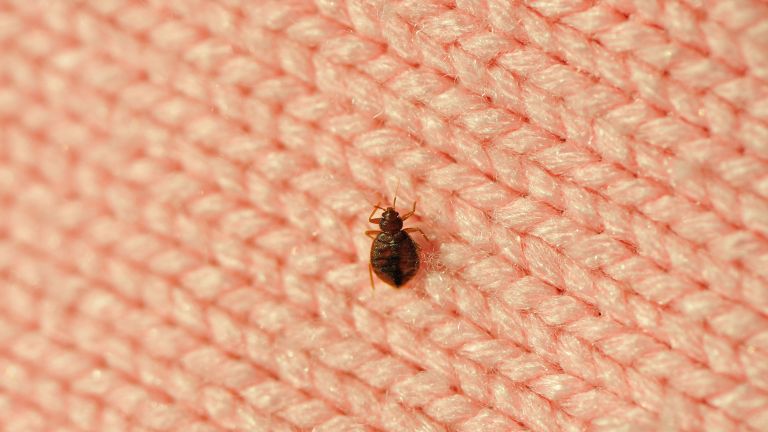Many people these days are unaware of bed bugs symptoms. It is understandable since bed bugs together with some pests have been exterminated during the widespread use of DDT in the United States after World War I.

But because of international travel and immigration, bed bugs symptoms are making a comeback. But people don't detect bed bugs symptoms until someone complains of excessive itching and has oval-shaped insect bite marks which are often mistaken as moquitoes or dust mites bites.
When a household experiences a typical bed bugs symptoms, they don't check their mattresses, beddings, and couch uphosltery for bed bugs. Member of the household just spray gel-type insect spray to kill cockroaches or mosquitoes. But this kind of insect spray does not kill bed bugs, and therefore, furniture and upholstery remain bed bugs infested.
* Bed bugs - symptoms of infestation
How do I know if my home is infested with bed bugs?
A heavily infested home would have an offensive, sweet, musty scent. This odor is released by bed bugs' through their scent glands.
Another bed bugs symptoms to look out for is fecal or excrement stains, egg cases, and shed skins of bed bug nymps in crevices, cracks or holes on the bed or near it. Furniture near the bed should be checked also. Bedroom wallpapers, bed springs and clothings in your dresser, should be examined for these reddish brown excrement stains.
Your living room couch should be checked for these stains, especially if you or any member of your family get bed bugs symptoms such as swollen bites after sitting from your couch. Every place in your house where a person stays more than 30 minutes must be checked for bed bugs.
-- Hiding Places
A thin crack or seams of mattresses are one of the hiding place of bed bugs. Bed bugs wants to live closer to their source of food, which is human blood, so cracks near the bed or around the bedroom and livingroom are the primary places of bed bugs hiding places.
Once you find a bed bug in any parts of your house, the other parts of your house will undoubtedly have bed bugs too.
-- Finding Bed Bugs
Inspect your entire house the moment bed bugs symptoms are detected. Dismantle the bed, check the headboard, inspect the seams of of your mattresses. If you found reddish brown excrement and sheddings of insect skin, it means that your house is infested with bed bugs.
If you detected these bed bugs symptoms, you must tear off your wallpaper too. Chances are that bed bugs have created their bigger colony under the wallpaper. Every wood furniture that you own should be inspected for bed bugs too. They may have bed bugs too because bed bugs prefer wood or cloth as their hiding place rather than plastic or metal.
Empty the contents of your nightstands and examine it inside and out. Tip it over to inspect the crevices, cracks, recesses and corners of the woodwork underneath. Since bed bugs love woods, there is a big chance that they are hiding in there.
-- Some bed bugs facts
Bed bugs bites are often mistaken to mosquitoes or dust mites. So how would you know the bed bugs symptoms? Below are some basic bed bugs bite facts:
* Bed bugs feed by piercing human skin with its two elongated beaks.
* One of the beak injects saliva that contains anesthetic to reduce pain to pierced skin and an anticoagulant to keep the blood from clotting.
* The other beak sucks the blood.
* Bed bugs are nocturnal insects. They are very active during the night, especially an hour before the dawn breaks.
* Bed bugs are oval-shaped and flat, and they can therefore hide in extremely thin cracks which is the reason why their breeding site are very hard to find.
* An adult bed bug can live eighteen (18) months or longer without feeding and just stay in their hiding or breeding places until a host comes along and satiate their need for blood.
* Bed bugs are often called the hitchhikers because of their ability to travel long distances by riding on suitcases, luggages and clothings.
* Female bed bugs lay 300 eggs.
* After ten (10) days bed bugs nymps are hatched from eggs.



